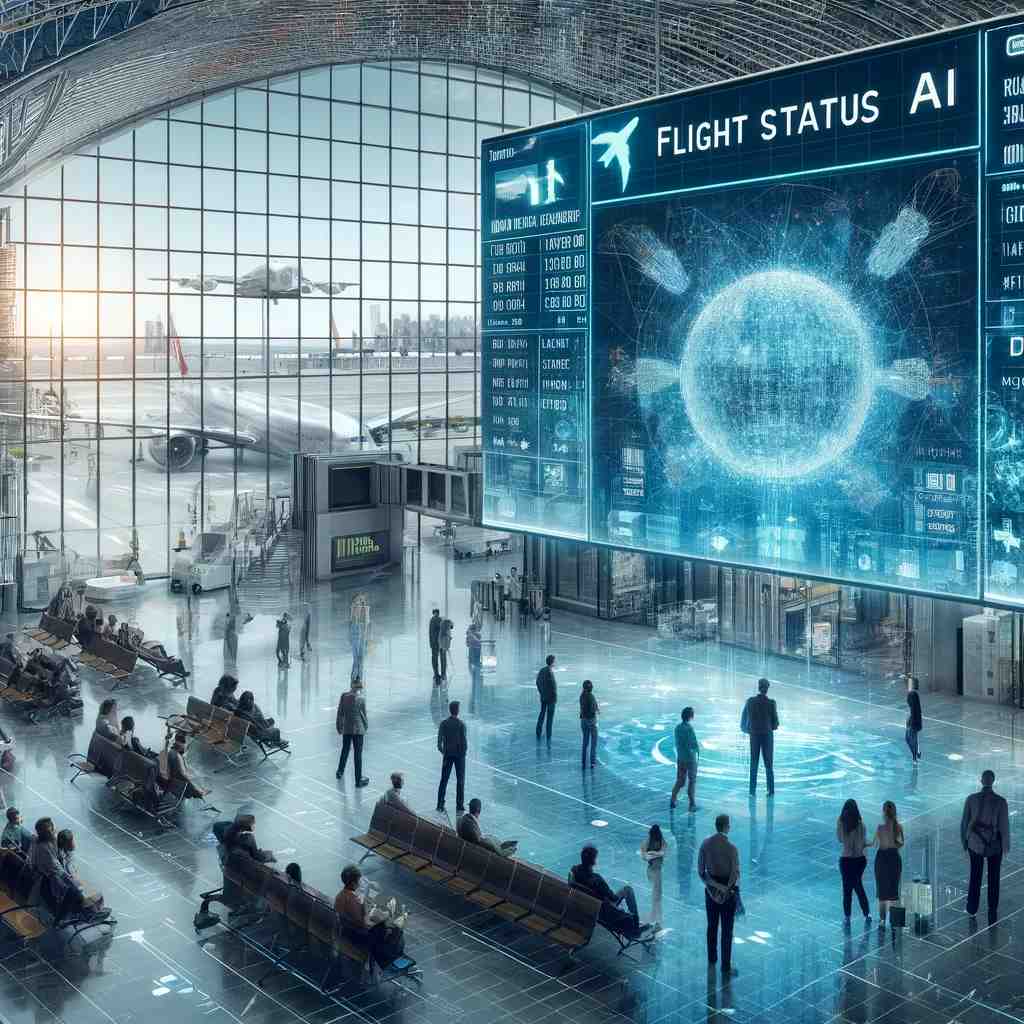In the dynamic realm of aviation, the creation of “Flight Status AI” marks a revolutionary shift, reworking how we get right of entry to and process flight-associated information. This progressive generation, harnessing the electricity of synthetic intelligence, isn’t always just an development; it is a complete overhaul of traditional methods, bringing a brand new generation of performance and reliability.
Introduction to Flight Status AI
The importance of Flight Status AI cannot be overstated. In an enterprise where timing is vital, this device stands as a beacon of precision and accuracy. It integrates a plethora of information assets, analyzes them in actual-time, and presents insights that were as soon as deemed impossible. This device isn’t just about showing flight times; it’s a complete answer that anticipates, analyzes, and advises.
Precision and Predictive Capabilities
Flight Status AI’s technique to managing flight data is multidimensional. It considers elements which include climate patterns, air traffic, and even historic statistics to are expecting feasible delays or disruptions. This degree of foresight is remarkable inside the aviation enterprise. Passengers, airways, and airport authorities now have a tool that gives predictions, no longer simply updates, setting a brand new standard in travel planning and control.
Operational Optimization for Airlines
The technology’s utility extends beyond mere flight monitoring. It’s a critical asset for airways in optimizing their operations. By correctly forecasting capability delays, Flight Status AI permits airways to proactively manage their schedules, lowering the cascading results of disruptions. This optimization results in sizeable value financial savings and improves general passenger satisfaction.
Customer Service Experience
In the context of customer service, Flight Status AI is a sport-changer. Airlines and airports equipped with this technology provide a advanced patron revel in. Passengers receive well timed and correct updates, empowering them to make informed decisions approximately their tour. This level of transparency and performance complements the agree with and loyalty of clients, that is priceless inside the competitive aviation industry.
Role in Crisis Management and Adaptation
Moreover, Flight Status AI plays a pivotal role in crisis management. In situations like excessive climate activities or technical problems, it provides actual-time data and alternative answers. This capability to unexpectedly adapt and reply is essential in minimizing the impact of such disruptions on each operations and passenger studies.
Accessibility and Mobile Integration
The integration of Flight Status AI into cellular packages and websites has made it noticeably reachable. Passengers can now get real-time updates directly on their smartphones, a convenience that aligns with nowadays’s virtual-centric life-style. This ease of get entry to isn’t always just a luxurious; it’s a necessity in our fast-paced international.
Contribution to Environmental Sustainability
From an environmental perspective, Flight Status AI contributes to sustainability in aviation. By optimizing flight schedules and reducing unnecessary gas consumption due to delays and protecting styles, it circuitously reduces airways’ carbon footprint. This contribution is a breakthrough in the enterprise’s efforts to combat weather change.
Advanced Data Analysis and Processing
Another aspect that units Flight Status AI aside is its data analysis skills. Using advanced algorithms and system mastering, it techniques significant amounts of statistics with extremely good accuracy. This precision is crucial in an enterprise wherein even minor mistakes can have massive outcomes.
Security and Data Protection
The security dimension of Flight Status AI is also worth noting. This generation contains robust safety features in a technology where cyber threats are a regular concern. Ensuring the integrity and confidentiality of flight facts is paramount, and Flight Status AI is ready to address this obligation, making sure that touchy information is protected from unauthorized access.
Collaborative Development and Expertise
Collaboration is key to Flight Status AI’s achievement. It represents a collective attempt among software program builders, aviation specialists, and records analysts. This collaboration ensures that the device aligns with the unique needs and nuances of the aviation industry and stays technologically advanced.
Workforce Evolution and New Opportunities
The implementation of Flight Status AI has also led to tremendous worker trends. It requires a brand new breed of aviation professionals. This evolution in activity roles creates interesting new opportunities and drives regional innovation.
Global Impact and International Connectivity
Regarding the global effect, Flight Status AI is breaking down geographical barriers. It provides a unified platform for monitoring flights worldwide, facilitating worldwide travel and commerce. This global attain is essential in an interconnected world, where the easy movement of humans and items throughout borders is critical.
Future-Proofing and Adaptability
Flight Status AI’s adaptability is another element that cannot be overlooked. This generation is designed to evolve as the aviation enterprise evolves. Whether accommodating new plane types, adapting to changing regulatory environments, or integrating rising technologies, Flight Status AI is constructed for the future.
Educational Integration and Professional Preparation
Educational establishments have identified the importance of Flight Status AI and are incorporating it into aviation and aerospace curricula. This integration is preparing aviation specialists’ technology to work seamlessly with the modern-day generation, ensuring the industry’s nonstop advancement.
User-Friendly Design and Inclusivity
Flight Status AI customizes the user experience to be intuitive and user-friendly. The design caters to users of all technical backgrounds, ensuring that everyone can access the benefits of this superior era. This inclusivity is crucial in an industry that serves various international populace.
Conclusion
AI isn’t always just a technological wonder; it’s a catalyst for transformation in the aviation industry. It redefines how flight statistics are processed and provided, leading to elevated performance, greater protection, and advanced customer satisfaction. As we look to the future, it is clear that AI will stay at the leading edge, guiding the aviation industry into a new era of technological excellence and operational performance.






Leave a Reply